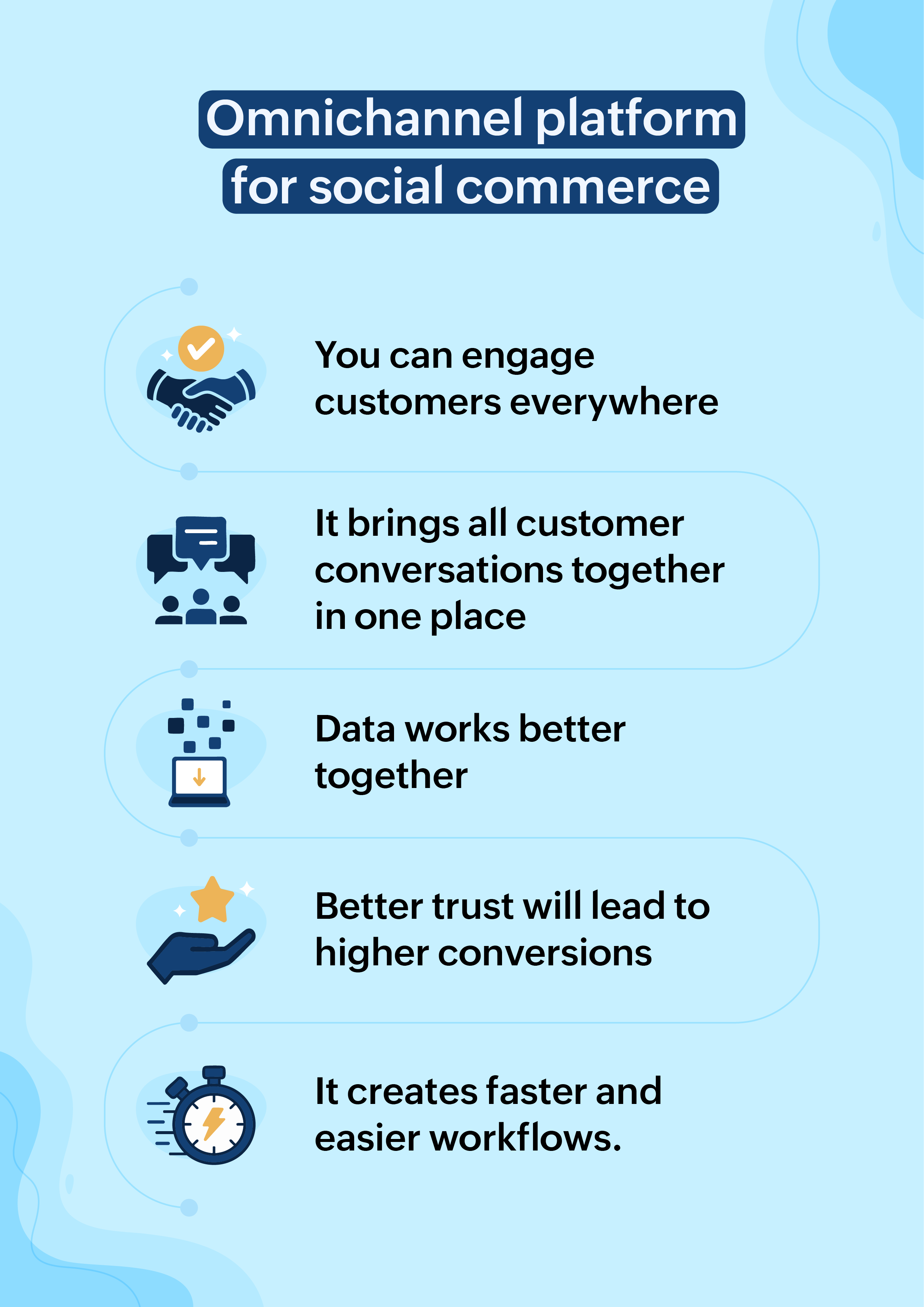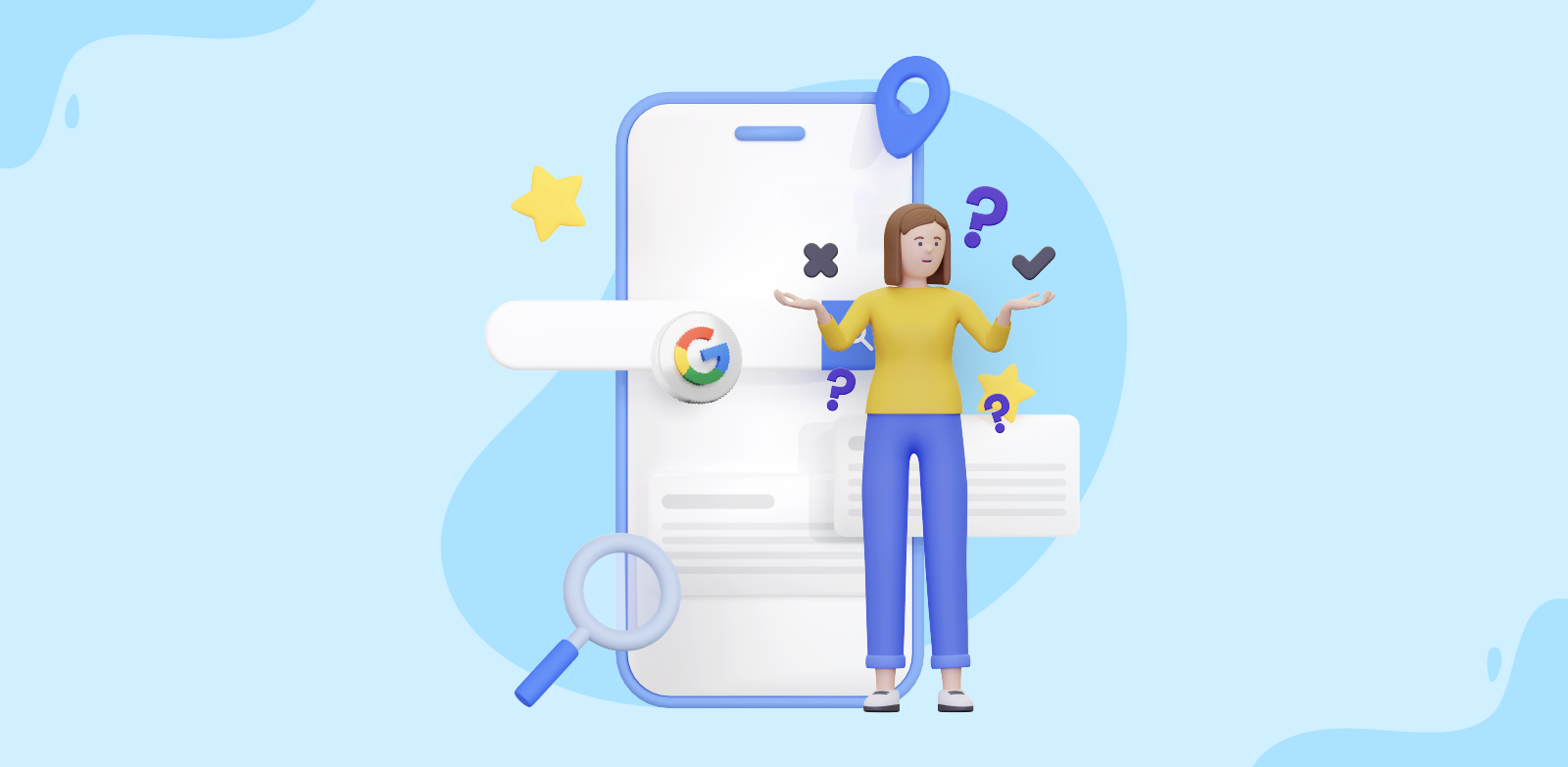- HOME
- Thought leadership
- Boosting social commerce with an omnichannel platform
Boosting social commerce with an omnichannel platform
- Published : April 16, 2025
- Last Updated : April 23, 2025
- 234 Views
- 8 Min Read

E-commerce is everywhere. Whether you're selling handmade products, digital products, or enterprise software, chances are you’re doing it online. And why not? It’s fast, simple, and doesn’t need a physical storefront. Customers can easily find products, compare other options, and make purchases, all from the comfort of their screens.
But here’s the thing: E-commerce is evolving now. It’s no longer enough just to have a website and wait for customers to show up. People now spend a big chunk of their time on social media; they scroll, like, share, and yes, shop.
That’s where modern businesses are showing up. Not just to advertise, but to sell directly. No matter the industry, product, or service, brands are now active across multiple social media platforms. They can meet customers where they already are and create a more personalized shopping experience for them.
This new trend is called social commerce, and it’s redefining the way people shop.
Think about your own habits. You’re scrolling through Instagram or Facebook and a product catches your eye. One tap takes you to the product page; a few more taps, and you've placed your order. It’s fast, smooth, and convenient, and you never even have to leave the app.
What is social commerce?
Social commerce is e-commerce, but with a social twist. Instead of directing customers to a separate website, businesses sell directly on social media platforms like Facebook and Instagram. Your social feed becomes your storefront. And your customers? Just a tap away from making a purchase. Everything from browsing to inquiring and checkouts happens in a single space. Shopping this way just feels easier, and people are taking advantage of that.
Imagine scrolling through your feed, and you spot a pair of sneakers you want. You tap, check the details, and make the purchase, all within the app. No need to leave the app or go to that website and go through checkout hassles. Just tap, buy, and they’re on their way to you. That’s social commerce making your shopping experience faster and smoother.
But it’s more than just convenience. Peer reviews, influencer shout outs, and user-generated content create more brand awareness. People are more likely to shop when they see real customers and influencers using the same product or services. Because 98% of internet users browse on their smartphones, it’s no surprise that mobile-friendly shopping is clearly the way forward.
How can an omnichannel platform boost social commerce?
For businesses, it’s not just enough to be present on multiple channels—it’s about connecting them all collaboratively. Omnichannel platforms bring all of your customer conversations from multiple communication channels into one unified place. Whether a customer interaction happens through Instagram, Facebook, or over email, everything comes to one single, shared place. This way, your teams can collaborate with customers, share information with fellow teammates, and respond faster, regardless of where the customer connects. No missed messages. No confusion. Just smooth and transparent communication.

You can engage customers everywhere.
Social commerce thrives on how customers engage with your brand. Responding to them in real time without any delays shapes their perception of your brand. With an omnichannel platform, all of your conversations stay in one place, ensuring you never miss a message or an opportunity to connect.
It brings all customer conversations together in one place.
An omnichannel platform can gather messages from all social commerce channels into one place. Whether a customer DMs your brand on Instagram about a product or messages on another channel, their inquiry lands directly in your team’s inboxes. From there, your team can tag, assign, or follow up and send timely replies without switching between platforms. This ensures that teams don't miss any query or order request.
Data works better together.
When you connect all your channels, you get a clear view of your customer interactions. What do they prefer? About which product or service did you get the most questions? With these insights, you can make smarter decisions and offer better recommendations on social platforms.
It creates faster and easier workflows.
Managing multiple platforms separately is a headache. An omnichannel system ties them together, so that you don’t have to switch between tools. Automation features help you automate repetitive tasks, set time-based replies, and use response templates for quick answers. You can move threads across inboxes for better assistance, add tags to stay organized, and keep every message where it belongs. With these smart workflows, you’ll work faster, stay consistent, and focus on what truly matters.
Better trust will lead to higher conversions.
Customers feel more confident when they see a consistent brand experience across all channels. When you provide consistent and more personalized responses across all channels, people are more likely to hit that “Buy Now” button.
The challenges of not having an omnichannel platform
Let's say a customer has asked about a product on Instagram. They send a DM but your team doesn’t see the message until days later. In another case, a sale happens on Facebook; you had a conversation through Messenger, but your team in charge of email marketing isn’t aware and missed an opportunity to follow up. These communication gaps can result in lost sales and unhappy customers. Social commerce is all about customer experience. An omnichannel platform helps you eliminates these issues by integrating everything social media, email, chats to your shared inboxes.
Best practices for using an omnichannel platform for sales teams
These days, people can find any product or service in just a few taps. You type a single product, and your screen is full with multiple brands. Which one are you going to pick? Sometimes, it's not just the product or service, it's the sales process and experience that you're looking for. To stand out in this competitive world of social commerce, your business needs more than just a presence across multiple channels—it needs a well-connected strategy. The key is to make every interaction smooth, personal, and efficient. Here’s how you can optimize your omnichannel approach and create better experiences for your customers.
1. Ensure consistency across channels.
Your customers want the same experience whether they’re reaching out via email, chat, or social media. You should have consistency in your conversations across every channel. Customers feel more confident in your brand when you unify your responses across different platforms. It shows that your team is reliable and on the same page.
2. Simplify your internal collaboration.
A smooth omnichannel strategy isn’t just about managing customer interactions, it’s also about how your team collaborates behind the scenes. Use internal discussions, share email drafts, and discuss incoming queries for a better response. This way, your teams stay updated, and work gets done without any unnecessary delays.
3. Make every interaction personalized.
Customers expect more than just responses; they want a conversation that feels personal to them. To give them this, you should use customer data from other apps such as CRM to personalize recommendations and follow-ups. When a returning customer reaches out, check their past purchases and then suggest the products. Personalized interactions like these build loyalty and keep customers coming back.
4. Provide a smoother shopping experience.
Convenience is the first thing that your customer wants when they're buying something. When customers have questions, a faster response time ensures that they don't have to wait. They can switch between channels, say from Instagram DMs to emails, without repeating their questions. This type of uninterrupted experience boosts customers' confidence that they're buying from a company that takes customer service seriously.
5. Automate to work smarter.
Customers don't like to wait. Set up automated responses for common questions, order confirmations, and follow-up emails to ensure fast communication with customers. This will not only save time for your team, but also show customers that you value their time. Keeping customers informed without extra effort from your team saves time and effort.
6. Build smarter strategies with analytics reports.
For an effective omnichannel approach, track key metrics like average response time, resolution time, the number of replies sent, and overall communication patterns. This will give you an overview of what's working well and what's not, and where you can improve. For sales teams, these key metrics can reveal how fast teams follow up and how long it takes to close a deal.
Things to consider when choosing an omnichannel platform
We've already discussed the benefits and best practices of omnichannel platforms for social commerce. But what about choosing the right one for your business? It can make all the difference in how efficiently your team operates and how consistently your customers experience your brand.
Here are a few important factors to keep in mind when you're on the lookout for an omnichannel solution.
1. Ease of connectivity
Start by checking if the platform connects well with your existing communication channels such as Instagram, Facebook, WhatsApp, and email. A good platform should feel like an extension of your current workflow, not a disruption. The smoother the integration, the faster your team can start working with it.
2. Multichannel inboxes for better collaboration
Multichannel inboxes allow your team to manage every message, whether it’s a social media DM, an email, or a chat—in one shared space. No more juggling between tabs or missing out on customer queries. With everything in one place, your teams collaborate easily, and customer conversations stay on track.
3. Automation features
Automation saves your most precious resource—time. Look for a platform that has features like automated workflow rules or writing assistance that reduces manual tasks and keeps things moving even when your team is busy. Automation not only speeds up response times but also ensures that customers get help on time.
4. Scalability
Your business isn’t standing still, and your platform shouldn’t either. Whether you're scaling your team, adding new sales channels, or expanding into new markets, your omnichannel platform should grow with you. Flexibility is key, so always look for a solution that evolves with your business needs.
5. Support and assistance
Even the best tools need a little guidance. Whether it’s onboarding sessions, training resources, or live customer service, make sure help is always within reach. A good support system ensures that your team feels confident and gets the most out of the platform from starting.
6. Data safety and security
Businesses gain their customers' trust when they believe that their information is safe with you. Your omnichannel platform might handle a lot of sensitive data. This data could be everything from contact information to conversation histories. Make sure it follows industry-standard security practices and offers data protection features and is in compliance with regulations like GDPR. When your data is secure, your customers and your brand stay protected.
Final thoughts
Choosing the right omnichannel platform is a smart move that helps scale your business across platforms. Omnichannel platforms such as Zoho TeamInbox brings all of your conversations into one organized space, so you’re never scrambling for context or switching between apps.
With Zoho TeamInbox, your team can manage emails, WhatsApp chats, Telegram messages, Facebook DMs, and Instagram conversations, all from a single, shared inbox. That means fewer silos, better teamwork, and faster responses. You can easily track who attended to which message, collaborate internally, and deliver consistent replies across every customer touchpoint.
And the best part? It’s now available on mobile. So whether you're at your desk or on the move, you can stay connected, in sync, and on top of every message.


